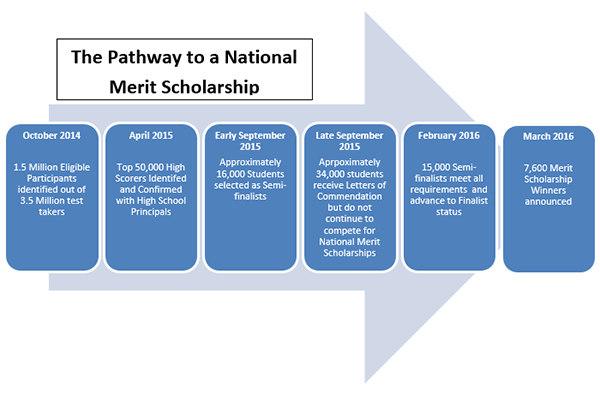
College, Career and Life Readiness
Top 10 Things to Know About the PSAT
Each fall, high schools students across the country head to the classroom to take the Preliminary SAT/National Merit Scholarship Qualifying Test (PSAT/NMSQT). Popularly known as the PSAT, the exam is co-sponsored by the College Board and the National Merit Scholarship Corporation.
Approximately 1.5 million students of the anticipated 3.5 million who will sit for the 2014 PSAT are expected to be eligible to compete for National Merit Scholarship Program recognition and scholarships. The ultimate prize is recognition as a National Merit Scholar which provides access to three types of scholarships (in addition to an increased profile with college admissions offices):
- National Merit® $2500 Scholarships
- Corporate Sponsored Scholarships
- College Sponsored Scholarships
While the PSAT often surprises parents and students alike, the process and rules defining the competition are very clear. If you don’t have time to read the 20 page official guide, the following will provide a crash course understanding of the PSAT. Enjoy!

Top 10 Things to Know about the PSAT:
- This is a merit competition. Merit Scholarship winners are chosen solely on the basis of their skills, abilities, and accomplishments. Descriptors such as gender, race, ethnic origin, or household income do not play a role in the selection of winners.
- The competition is intense. Approximately ½ of 1% of eligible PSAT test takers become Merit Scholarship Winners.
- Your high school transcript and selected courses matter. Students who qualify as Finalists must possess a record of “very high academic performance” in grades 9-12 and in any college level classes, such as Dual Enrollment courses, completed while in high school. Schools with Semi-finalists will be contacted and asked to provide full transcripts for the student in question, as well as information on the school’s curriculum and grading system.
- You have one shot. Students can only be eligible (i.e. compete for scholarships) one time over their high school career.
- You need to be a U.S. citizen. The NMSC is only open to citizens of the United States or lawful permanent residents who intend to become a U.S. citizen.
- Your Junior Year Matters. To be eligible, a student generally needs to take the test during their junior year in high school as the merit scholarship selection process requires almost two years from start to finish. Eligible students are those who will be enrolling in a post-secondary institution within two years of their testing date.
- Take the test as a sophomore as a practice run. Sophomores are permitted to take the PSAT/NMSQ; however, if they are planning to graduate in a traditional trajectory of four years, they will not be eligible to compete for scholarships based upon their sophomore scores. They will need to retake the PSAT during their junior year.
- Semi-finalists winners are allocated by State. In order to ensure equal access to the competition, semi-finalist winners are identified on a state representational basis. This allocation is based upon the state’s percentage of the national total of that graduating class.
- Finalists are not the only ones who get scholarships. Commended Students & Semi-Finalists who do not reach Finalist status can still receive scholarships through the National Merit Scholarship Competition. NMSC provides 1,300 Special Scholarships to outstanding students that do not reach Finalist status. These scholarships are provided by corporate sponsors.
- Show me the money! The 8,900 scholarships that will be awarded in 2016 to eligible 2014 test takers have a combined value of over $44 million.
To learn more about the PSAT, visit the College Board test portal at https://www.collegeboard.org/psat-nmsqt. Good luck!
background-image: a building with the American flag in front of it